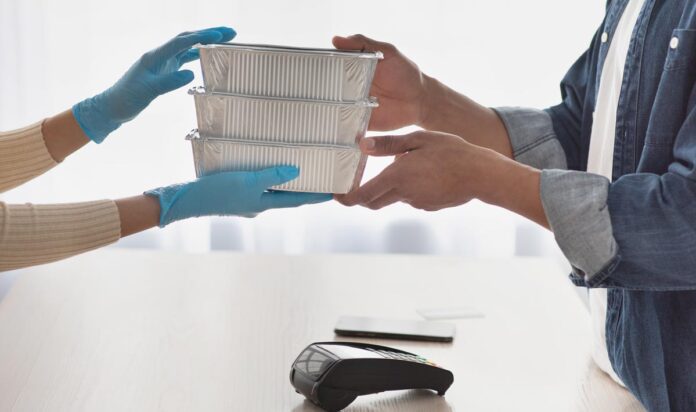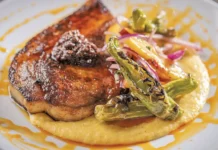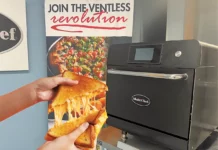
Out of sight, not out of mind. Off-premise activity introduces new food safety danger areas and risks.
By: Hal King, Ph.D. President and CEO, Public Health Innovations and Managing Partner, Active Food Safety LLC
More restaurant operations are occurring outside of traditional spaces due to the growth of off-premise sales. As with all foodservice policies, “out of sight, out of mind” is never a best practice, and it’s absolutely necessary to be stewards of food safety even when it can’t be readily observed.
One business model to address the economic loss that has impacted the restaurant and foodservice industry over the past year and half is the more rapid expansion of off-premise sales. This business model includes the preparation of food for immediate consumption and home meal kits for pick-up, delivery, drive-thru, curbside, and even packaged food sales. Before the pandemic, off-premise sales were primarily pursued for the convenience of the customer (e.g., delivery), and as a means for a foodservice business to grow sales beyond restaurant visits, with cost being an ever-present limiting factor. However, now, during this pandemic, off-premise sales are driven primarily by public health, as well as a need to recapture lost sales due to in-restaurant dining restrictions.
What are the safety considerations?
Two safety concerns of off-premise sales are the food safety risks associated with foodservice food preparation (generally caused by the hazards associated with foods prepared and served to customers for immediate consumption) and the additional risk of keeping the food safe after the food has been prepared, including holding (e.g., keeping food hot or cold to prevent growth of pathogens), handling (e.g., preventing tampering of the food), transporting (e.g., preventing contamination of the packaging), and delivering the food to a customer (e.g., ensuring customer is not exposed to an infected delivery person). Because customers are ordering from a mobile app or web site, they may also be at a higher risk for allergens due to the lack of avoidance messaging that is normally part of the in-restaurant ordering process.
One of the more probable safety concerns in off-premise sales is from contaminated environmental surfaces that play a critical role in the indirect (secondary) transmission of pathogens. For example, the virus that causes stomach flu, norovirus, can survive on surfaces for many days, with even greater persistence at cold temperatures. The transmission of norovirus may not only be by a food handler during food preparation. This virus can also be transmitted simply by contamination of items reused to carry foods including reusable food storage and delivery equipment and bags.1
Regulatory vs. public health – which is which
The FDA Food Code does not specifically address regulations for off-premise sales of food except in the packaging and selling of packaged foods by permitted restaurants and foodservice businesses, and by mobile foodservice locations. Thus, there are significant gaps between what the food industry and third-party delivery businesses are doing and what should be more closely regulated.
A major safety concern with the transporting and delivery process may be with the third party (normally not a restaurant or foodservice employee) who picks up and delivers the food. Neither the FDA nor most states regulate which delivery service can pick up food from a restaurant or foodservice business and deliver that food to a customer. These unregulated third-party delivery services that are not required to work with the restaurant or foodservice business to ensure safety could increase risk by providing incorrect menus and ingredients (allergen avoidance risk), failing to ensure the quality of the food upon delivery, or not following personal hygiene and safe transport of food guidelines — all of which could also hurt a restaurant’s reputation.
Some states are moving forward with regulations before the Food Code is updated. California’s Fair Food Delivery Act, passed in September 2020, requires food delivery platforms to obtain an agreement from restaurants “expressly authorizing” them to take orders and deliver meals. In defending the change, the bill points out that California law already generally requires various businesses that prepare or otherwise provide food to the public to comply with uniform health and sanitation standards.2 We can likely expect future updates to the FDA Food Code to address off-premise sales as a recent set of guidelines were recently published by the Conference for Food Protection3 and reviewed against best practices that retail foodservice business can use for application.4
Until more guidance is published in the FDA Food Code, it is recommended that both foodservice and third-party delivery businesses utilize these best practices as they develop their policy and procedures to ensure consumer safety.
Best Practices to ensure the safety of off-premise sales and to maintain your customer loyalty
While off-premise sales may be the lifeline for saving a business and facilitating long-term recovery and growth even once the pandemic has subsided. Different establishments have different challenges they must meet as they give more focus to off-premise dining. A family-owned establishment that has been around for generations must learn to adapt to the expectations of today’s consumers. A large chain must think more about their drive-thru windows or curbside presence. Ghost kitchens have emerged to make the best of a bad situation.
But, the common denominator is that off-premise activity is here to stay. In addition, these recommendations may prove worthwhile across the board:
- Ensure safety in the kitchen – Establish Active Managerial Control of all foodborne illness risk factors to ensure prepared foods start their journey to the customer safe 5
- Ensure safety beyond the kitchen – Ensure your third-party delivery provider (if not your employee) is approved to sell and deliver your menu, and ensure you both follow guidelines that include inspection of the delivery vehicle to ensure cleanliness, ensuring drivers are using proper disinfection protocols, confirming drivers are trained on proper food handling risks (keeping hot foods hot and cold foods cold) and establishing personal hygiene expectations and wellness screens for drivers (not driving and delivering foods while sick with symptoms of COVID-19 or foodborne illnesses). Operators are also encouraged to order from their menu while at home in order to see firsthand the off-premise experience (is the food properly hot or cold, not spilled, are tamper-evident seals intact, etc.).
- Go the extra mile to gain loyalty (i.e., the customers continue to reorder) – Provide educational materials and reminders for the consumer to enhance their trust of the food, its sanitary transportation, and allergen safety (avoidance messaging), and get feedback from them about their experience (e.g., will they reorder) especially if they report a negative experience.
- Show the customer what you are doing to protect them for their safety – Providing hand sanitizing wipes with each off-premise order for both third-party delivery drivers and customers demonstrates a commitment to safety. For example, placement of the hand sanitizing wipe on the outside of the packaging signals customers to clean hands before eating.
In all, some of the most important actions a business in the foodservice industry must take are around off-premise. This means not only offering customers the opportunity to purchase food with reduced risk of interactions with individuals that may lead to exposure to the pandemic virus, but treating off-premise as a meaningful representation of the establishment, its quality, and its safety practices. Chiefly, it means remaining committed to practices that ensure food safety, including and especially those related to the risk areas introduced into the equation via the off-premise operation.
References























